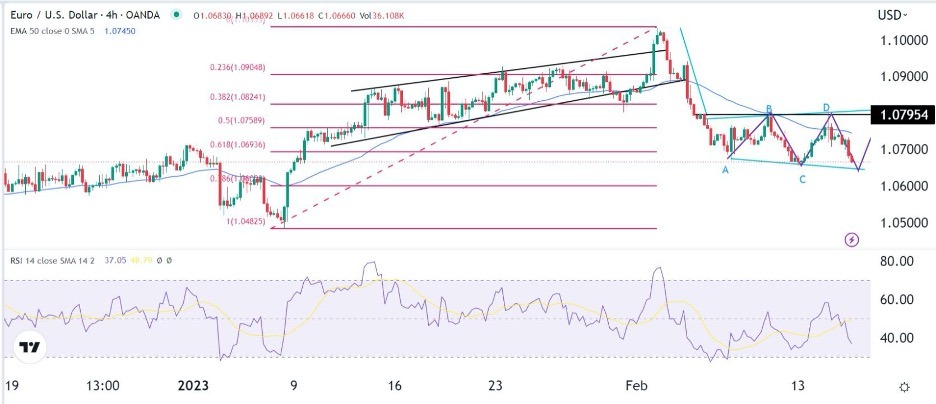The EUR/USD hit a low of nearly 1.06140 this past Friday before seeing a slight reversal higher take place as the currency pair went into the weekend limping. The EUR/USD will begin this week’s trading near the 1.06945 level and speculators who have carried bullish optimism the past few months likely are readjusting their outlooks. The fundamental culprit for the downturn in the EUR/USD was U.S. inflation reports last week.
The U.S. published a rather stubborn Consumer Price Index on Tuesday which didn’t show inflation was slowing as much as anticipated by many financial houses. To make matters worse for day traders who kept their bullish optimism alive with long positions going into last Thursday, Produce Price Index statistics from the U.S. proved stronger than anticipated. This sent the EUR/USD to lower depths and by early Friday the Forex pair was testing bearish values not seen since the first week of January.
The U.S Federal Reserve Tried to Warn Financial Houses and many did not listen
When the U.S. Federal Reserve raised its interest rate more than a couple of weeks ago, the U.S. central bank warned it remained nervous about inflation. On the 1st of February, bullish traders on the EUR/USD were not paying much attention and were skeptical about the Federal Reserve’s interest rate outlook which warned more hikes could be coming in the mid-term.
While the rhetoric of the March interest rate hike to come of another 0.25% was accepted easily, many financial houses remained hopeful the Fed would be proven wrong and have to reverse policy sooner rather than later. Things however have not gone as anticipated by EUR/USD bullish speculators since February 3rd. Now, after two rather significant inflation reports from the U.S last week showing higher prices remain a concern, a downturn in the EUR/USD has taken place.
The 1.07300 EUR/USD Looks like a Distant Goal in the Short-Term
- Only a couple of weeks ago the EUR/USD seemed optimistic like it could challenge the 1.09000 and 1.10000 levels relatively easily as bullish momentum was embraced.
- Aggressive U.S Federal Reserve monetary policy which has warned about interest rates above 5.00% appears realistic in the mid-term.
- Preliminary Gross Domestic Product numbers will be published in the U.S. this Thursday, and if stronger growth than expected is shown, the EUR/USD could produce more sales.
EUR/USD Weekly Outlook:
The speculative price range for EUR/USD is 1.05900 to 1.07750
The ability of the EUR/USD to turn in a reversal higher before closing this past Friday was intriguing. However, if negative behavioral sentiment remains strong, the EUR/USD could find that surpassing the 1.07300 level is difficult in the coming days.
Traders who suffered last week if they were pursuing buying positions of the EUR/USD, assuming U.S inflation would show it was weaker certainly got hurt and likely knocked out of their long positions. If the EUR/USD opens nervously on Monday and starts to challenge lower levels like the 1.06700 to 1.06500 range, this could be a bearish signal. While the EUR/USD definitely achieved a solid bullish run higher in the past few months, selling pressure has been strong since early February.
Traders should remain cautious and take into account the GDP numbers coming from the U.S. this Thursday because the outcome of this report will cause volatility. Stronger than expected Retail Sales data in the U.S. last week was also a surprise, and if growth numbers coming this week via the GDP are also strong, the U.S. Fed will use this as ammunition to continue to raise interest rates in the mid-term. If hikes of another 0.50% to 0.75% from the U.S. central bank are factored into the EUR/USD this could cause additional bearish selling. The 1.06300 to 1.06150 ratios should be watched carefully.
Yes, reversals higher are certain to be seen, but the question is if they can sustain momentum in the EUR/USD in the near term. A weaker-than-expected GDP number from the U.S. could help bullish activity in the EUR/USD. However, before this –if it - occurs bullish speculators should remain realistic and not overreach for targets that are too high. The 1.07300 ratios should be watched to see if it can be challenged, surpassed and sustained this week.
Ready to trade our weekly Forex analysis? We’ve made a list of the best brokers to trade Forex worth using.
